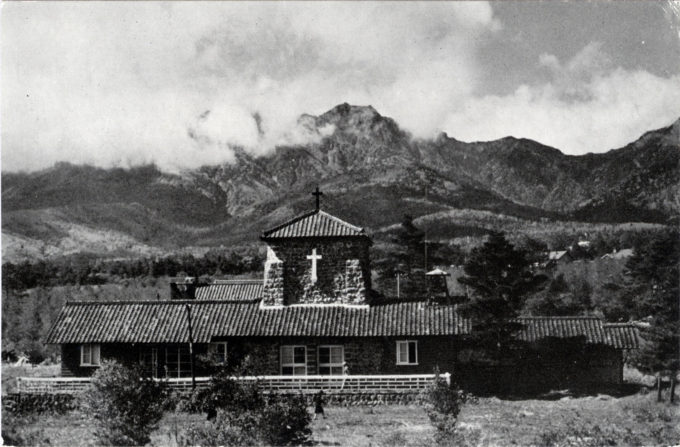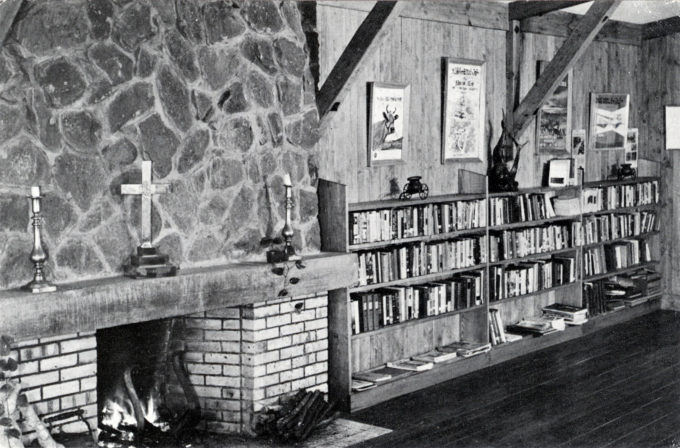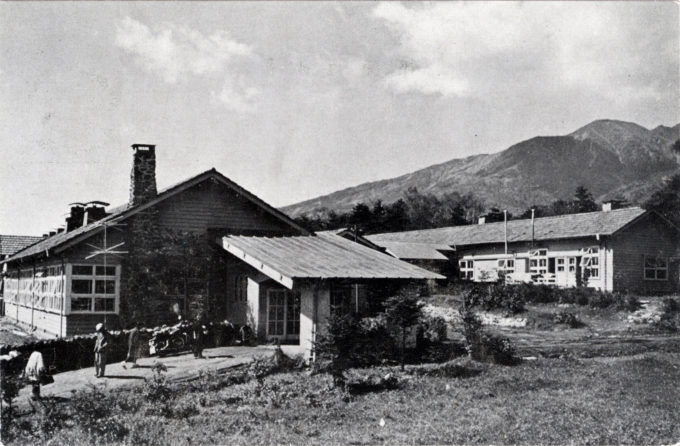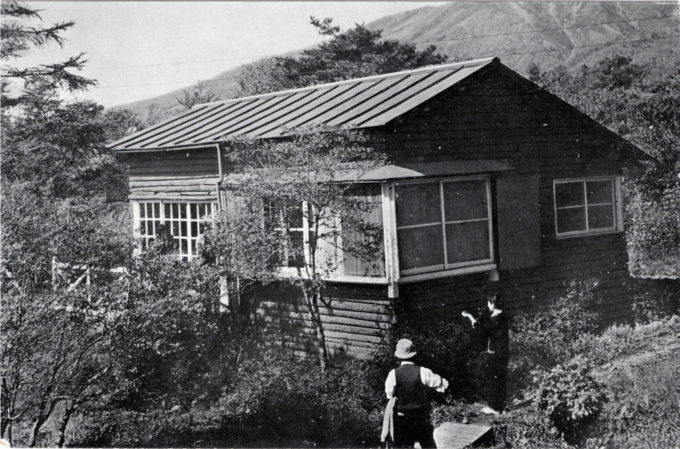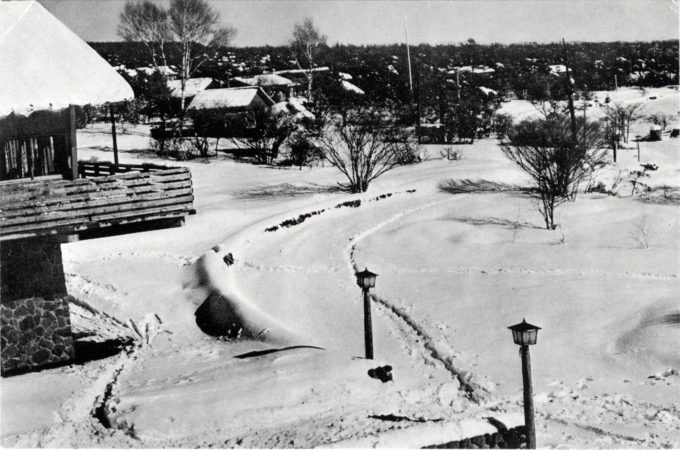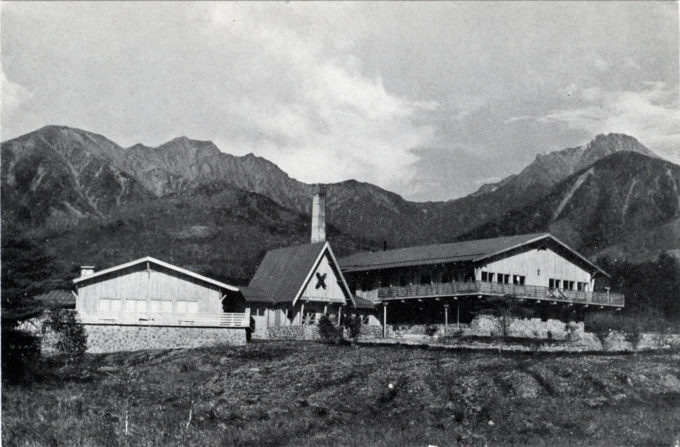
Camp Seisen Ryo, KEEP, Kiyosato c. 1960. KEEP (Kiyosato Educational Experiment Project) was founded in 1938 by American missionary Paul Rusch to bring food, health, faith, and hope for the youth of Kiyosato by means of agricultural development, improvements in health care and hygiene, advances in education, and “the Anglican tradition”.
“High in the Japanese Alps, 70 miles west of Tokyo, a small, nearly bald 57-year-old Kentuckian by the name of Paul Rusch has started a revolution for rural Japan. He has shown 110,000 farm people how to wrench a new life from mountain sides and brief valleys that never before produced anything but trees, rock, and flame-colored azaleas.
“… Hereford and Jersey cattle graze on rich grass. A modern dairy turns out milk and butter. Red hens cackle in hundreds of farmyards. Families that had never seen a doctor are receiving medical care in the first hospital they’ve ever seen. A medical team jeeps across rugged mountain trails to give children chest X-rays and medical examinations. A free lending library, one of the few, distributes books and pamphlets to a literate people who formerly had nothing to read.
“… Rusch chose as his frontier the village of Kiyosato, near which he established a youth training center in 1938. Although only 70 miles from modern Tokyo, the people in the area were really 1,000 miles away and 100 years behind the times. Living at an altitude too high to grow rice and too far from the sea for fresh fish, they subsisted on a grayish noodle called soba, dried seaweed, a fresh vegetable now and then, and rice only on important holidays.
“Around Kyosato, one out of five people had tuberculosis or other chest trouble, nine out of ten adults suffered from cramp-causing roundworms, and a child never tasted milk after leaving its mother’s breast. Poverty was the way of life.
“Rusch told these people that they could fight their way out of their poverty and near-starvation. Their land of weeds and trees, he said, could produce food and provide pasture for cattle. But it would take work and help. They would have to do the work. He would find the help.”
– “Answer to Japan”, The Rotarian, June 1956
“Paul Rusch first arrived in Japan in 1925, initially to help the YMCA with reconstruction efforts after the Great Kantō earthquake, and stayed to dedicate his life and energies towards youth education, post-war reconciliation and rural development in that country. Through his association with the Anglican Church in Japan he taught both Economics at Rikkyo University and was later also instrumental in helping Dr. Rudolf Teusler raise funds for the expansion of St. Luke’s International Hospital in central Tokyo.
“Rusch is most widely known for his work in founding the rural Camp Seisen Ryo at Kiyosato, on the slopes of Mt. Yatsugatake, Yamanashi Prefecture. The camp and farm, first opened in July 1938, served as an Anglican youth mission center prior to the Second World War and was rededicated in 1946 as the Kiyosato Educational Experiment Project (KEEP).
“After the war, as surrounding fields were cleared, a new Anglican church dedicated to St. Andrew was constructed using local stone. A vocational school, an experimental farm, a nursery and library facilities soon followed. In June 1948 the groundbreaking ceremonies for the Seisen Ryo rural clinic were attended by His Imperial Highness Prince Takamatsu.”
– Wikipedia
- Lounge, Camp Seisen Ryo, KEEP, c. 1960.
- St. Luke’s Rural Clinic, KEEP, c. 1960.
- Cabin, Camp Seisen Ryo, KEEP, c. 1960.
- Camp Seisen Ryo, KEEP, c. 1960.


